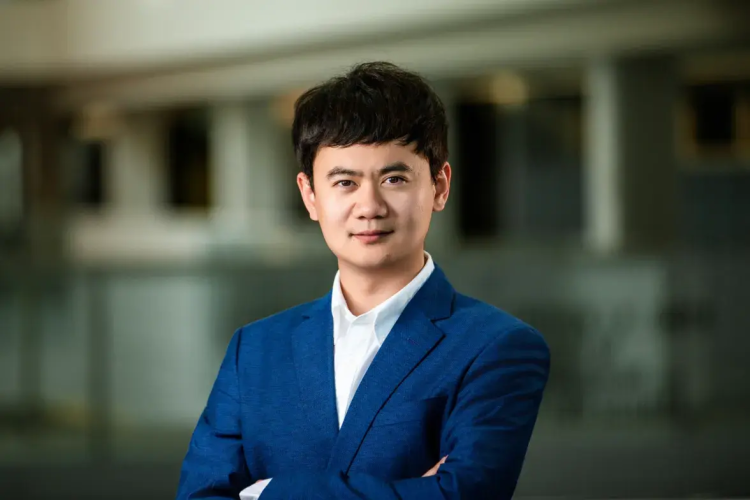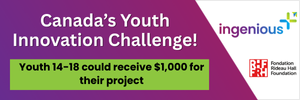Glioblastoma is the most aggressive form of brain cancer, and even with surgery, chemotherapy, and radiation, it remains extremely difficult to control. As a result, most patients survive little more than a year after diagnosis. Queen's researcher Xian Wang (Mechanical and Materials Engineering, Ingenuity Labs Research Institute, Sinclair Cancer Research Institute) is working on a bold new idea that could pave the way for treatments using tiny, microscopic bubble robots that physically break apart brain tumours.

The Brain Canada Future Leaders award highlights Dr. Xian Wang's work at the frontier of brain health research.
He is one of 22 researchers across Canada to receive $100,000 through Brain Canada's Future Leaders in Canadian Brain Research program. Altogether, this national initiative represents a $2.2-million investment, made possible with support from Health Canada through the Canada Brain Research Fund, and empowers early-career scientists whose ideas could transform the way brain diseases are treated.
Bypassing the brain's defences
The project centres on bubble robots, tiny spheres about the size of a red blood cell called acoustic microbubble microrobots. Guided by magnets, they can be directed through brain tissue until they reach a tumour. Once there, ultrasound waves make the bubbles vibrate, producing small but powerful mechanical forces that tear apart nearby cancer cells while leaving healthy tissue largely unharmed.
"Glioblastoma resists many drugs, so we are exploring a physical therapy that attacks the tumour's structure," says Dr. Wang. "By guiding microbubbles to the cancer and activating them with ultrasound, we aim to damage tumour cells precisely while limiting effects on healthy brain."
To help move this technology toward clinical testing, Dr. Wang is working with collaborators from SickKids Hospital and Kingston General Hospital, and is expanding collaboration with Dr. Andrew Craig at the Sinclair Cancer Research Institute. These partnerships add crucial biomedical and clinical expertise to the engineering advances underway in his lab.
Rethinking brain cancer treatment
Dr. Wang's team has already shown that earlier magnet-controlled particles could destroy glioblastoma cells in mice. However, those earlier designs raised concerns about long-term safety and how the body could clear them after treatment.
The new bubble robots are designed to overcome those issues. They use materials already familiar in medical ultrasound procedures, making them more biocompatible. The technology also includes a retrieval system, ensuring the robots can be removed once their work is done. Early tests suggest capture rates could exceed 90 per cent, a key step toward eventual clinical use.
The work will unfold in stages, starting with lab-based design and testing. The team will then integrate the control systems, develop a way to retrieve the bubbles after treatment, and finally test the complete approach in mouse models of glioblastoma.
"Unlike chemotherapy or radiation, which can damage surrounding tissue, this method focuses on the tumour's structure while reducing harmful side effects," says Dr. Wang. "This grant lets us connect engineering innovation with urgent medical need."
From brain cancer to broader brain health
Over the next two years, Dr. Wang's lab will refine the system from concept to animal testing. If successful, the approach could open an entirely new path for treating brain cancer.
The study also accounts for differences in how glioblastoma affects men and women. Both male and female cell lines and mouse models will be used to track whether tumours respond differently to treatment. This step helps ensure results can be applied more broadly and accurately.
The project is also a training ground that reflects the lab's commitment to equity, diversity, and inclusion. PhD candidates will lead modelling and design, master's students will build and test prototypes, and undergraduates will support with imaging and analysis. By recruiting trainees from groups underrepresented in science and engineering and pairing hands-on work with inclusive mentorship, Dr. Wang's lab is preparing a new generation of researchers to bridge engineering and medicine and to become leaders in biomedical innovation.
The potential of Dr. Wang's project extends well beyond cancer. Localized, precise treatment could one day help with epilepsy, Parkinson's disease, or stroke. In each case, the bubbles could be directed to a specific brain region and activated to act only where needed.
"Our goal is to create a safe, targeted therapy that improves both survival and quality of life for people facing brain disease," says Dr. Wang. "It is an opportunity to rethink how we approach conditions once thought untreatable."
Learn more about the recipients of Brain Canada's Future Leaders in Canadian Brain Research program.













